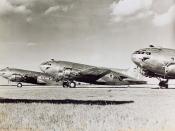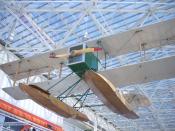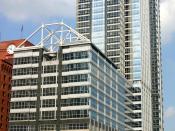I.Introduction
"Boeing has long talked about expanding into the services area...." Does it make sense? This is the question that we will try to answer in this paper by analyzing the market conditions, the customer needs, and Boeing's core capabilities.
Within the commercial aircraft industry, Boeing's focus for value-added service relates primarily to the transport airplane segment, which is expected to grow in the following years.
The most important driver for the commercial aircraft market is the trend in airline passenger traffic, which is mainly influenced by:
-Economic growth
-Political stability
-Other factors such as, industry profitability, environmental constraints, technology, price, among others
Boeing projects the total commercial aircraft market over the next 20 years at more than $1,000 billion, based on global economic growth projections, increased utilization levels of worldwide aircraft, and requirements to replace older aircraft.
Nevertheless, the revenues in aircraft manufacturing are decreasing given the competitive forces for customers and manufacturers.
This condition has driven Boeing in adopting a value-added service proposal in order to launch a program offering a "total solution for airline fleet management".
II.Value Chain
Design and manufacture of aircraft are only the first two links of the value chain. After manufacture, the planes must be financed, maintained, and occasionally modified for different uses. Sometimes the planes must be repaired or recovered from traumatic in-flight damage. Besides direct activities on the planes, flight crews and technicians must be trained. Finally, parts must be produced, repaired and distributed.
Boeing is mainly involved in design and manufacture of aircraft and spare parts. However, this portion of the market is shrinking due to decreased demand of new aircraft and slim margins. As evidence, in the three years of the case, average EBIT for commercial airplanes was US$-272 million. Revenues in 1998 were about $35.5...



Boeing...
I am a stockholder in Boeing...therefore I get their quarterly report...what the author wrote is semi-accurate...some things are completely omitted...and certain points are delved deeple enough into.
1 out of 1 people found this comment useful.